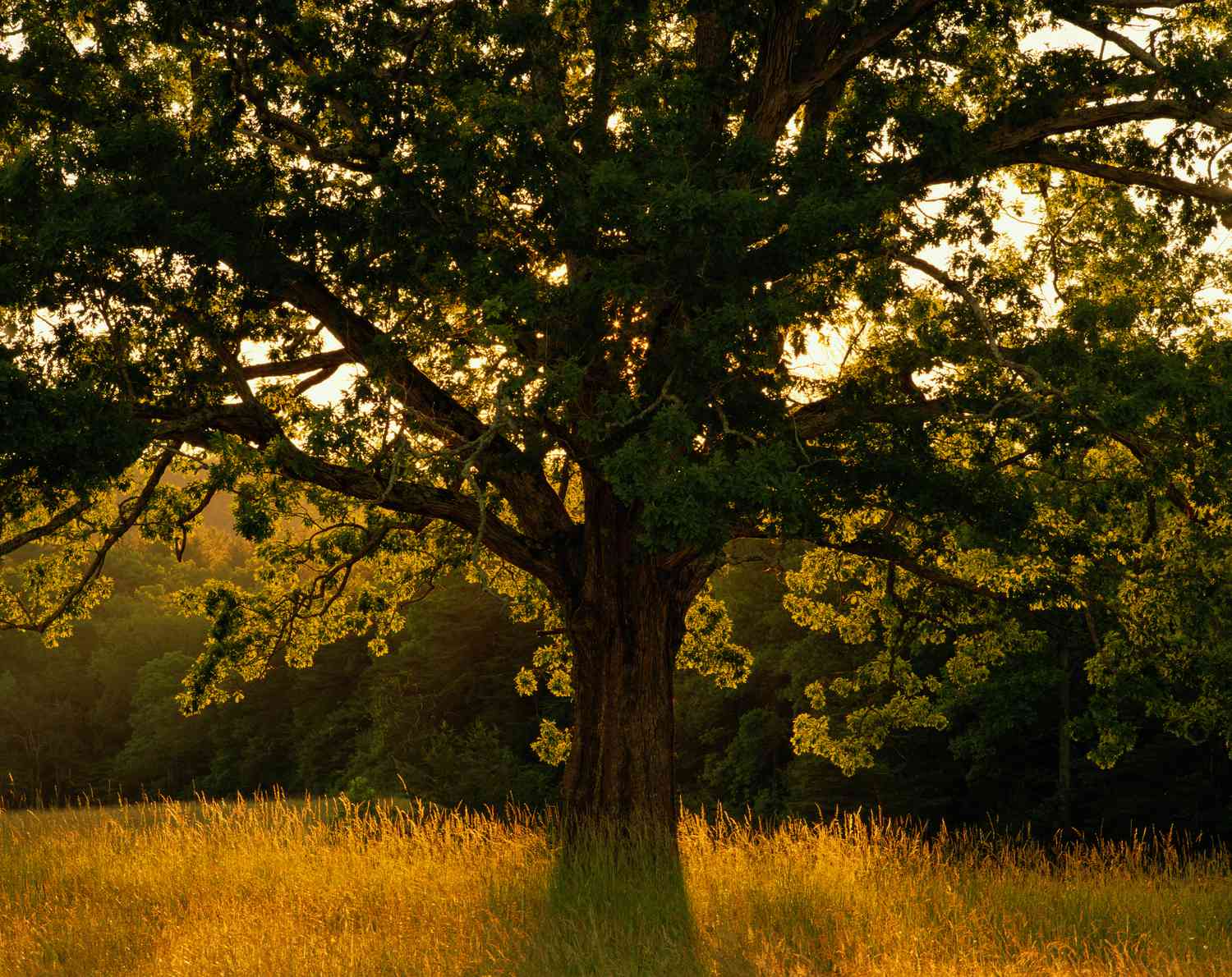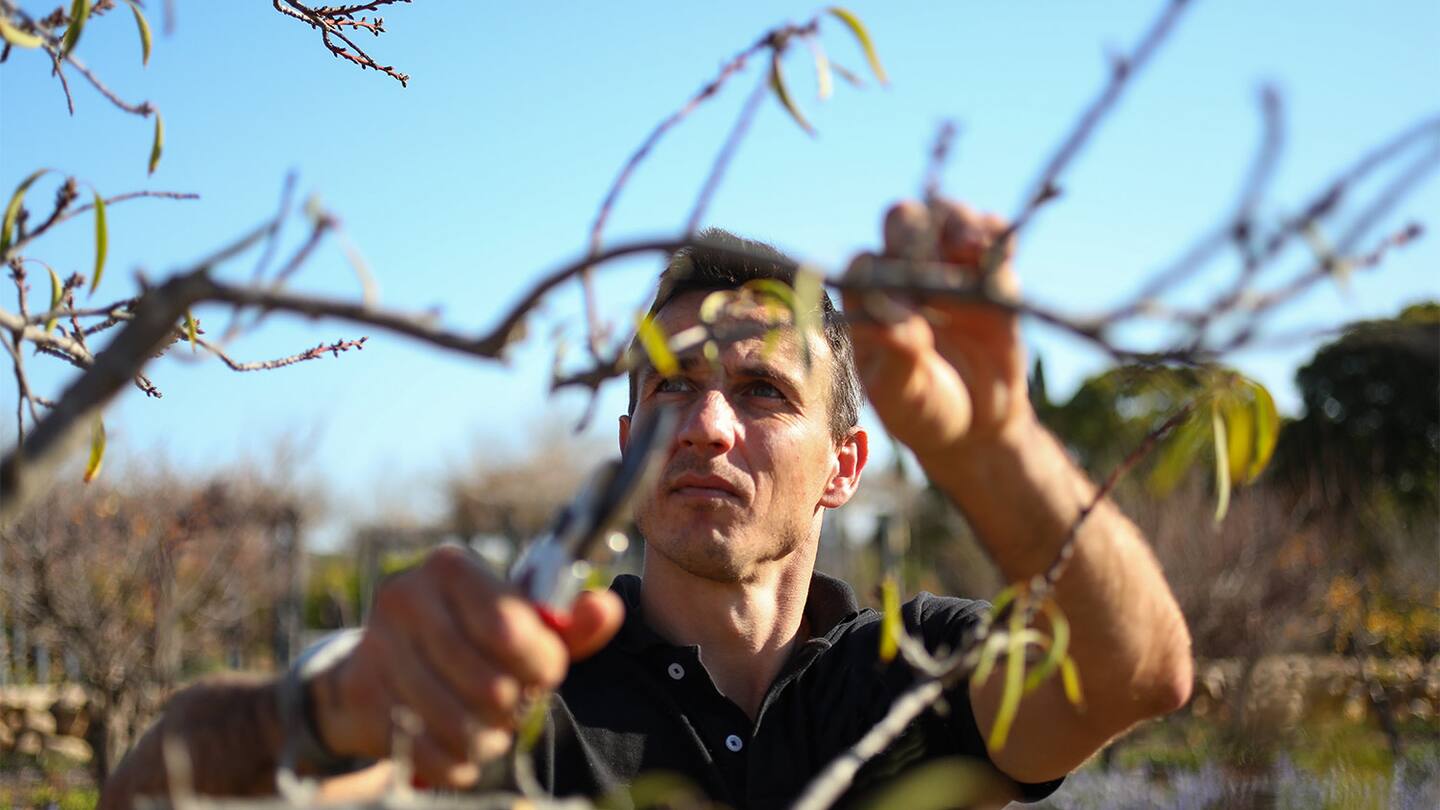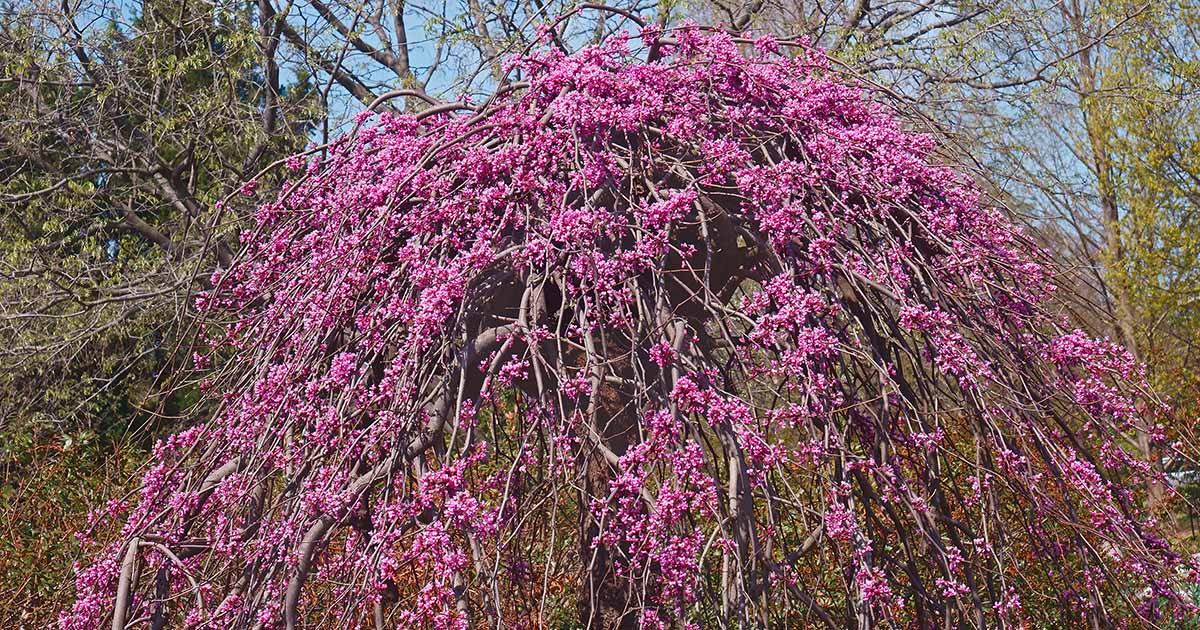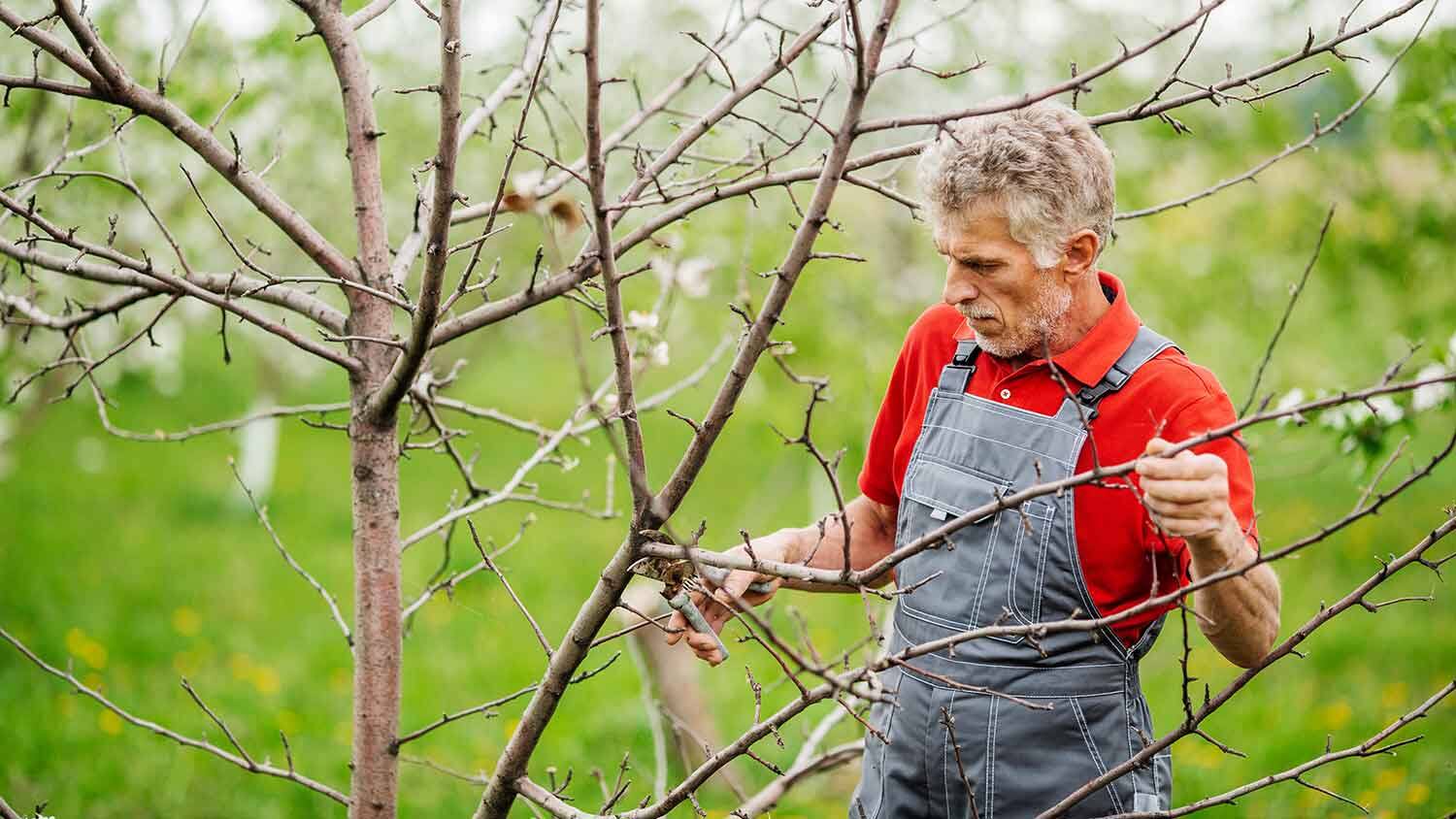Home>Gardening Techniques>Plant Care>When To Trim Arborvitae Shrubs


Plant Care
When To Trim Arborvitae Shrubs
Modified: January 22, 2024
Learn when to trim arborvitae shrubs for optimal plant care. Discover the best time to prune and maintain your arborvitae shrubs to promote growth and maintain their shape.
(Many of the links in this article redirect to a specific reviewed product. Your purchase of these products through affiliate links helps to generate commission for Chicagolandgardening.com, at no extra cost. Learn more)
Table of Contents
Introduction
Welcome to the world of arborvitae shrubs, where beauty and serenity meet. Arborvitae shrubs, also known as Thuja, are evergreen plants that are popular in landscaping for their vibrant green foliage and graceful appearance. These versatile and low-maintenance shrubs can add structure, privacy, and a touch of elegance to any garden or outdoor space.
While arborvitae shrubs are relatively easy to care for, one important aspect of their maintenance is proper trimming. Regularly trimming your arborvitae shrubs not only helps them maintain their desired shape and size but also promotes healthier growth and overall vitality.
However, knowing when to trim your arborvitae shrubs is crucial to ensure that you don’t disrupt their natural growth patterns or cause any unnecessary stress. In this article, we will explore the various factors to consider and the best time of year to trim arborvitae shrubs. So, let’s dive in and discover the secrets to keeping your arborvitae shrubs in top shape!
Factors to Consider Before Trimming Arborvitae Shrubs
Before you grab those pruning shears and start trimming your arborvitae shrubs, there are several important factors to consider. By taking these factors into account, you can ensure that the trimming process will be beneficial for your shrubs and yield the desired results. Let’s take a closer look at what these factors are:
- Time of year: The timing of your arborvitae shrub trimming plays a crucial role in its overall health and growth. It’s important to trim your shrubs during the right season to avoid any potential harm. We’ll discuss the best time to trim arborvitae shrubs in detail in the next section.
- Size and shape: Consider the desired size and shape you want your arborvitae shrubs to be. This will help you determine the extent and style of trimming required. Take into account the surrounding landscape and the purpose of the shrub (privacy screen, focal point, etc.) when deciding on the size and shape.
- Health of the shrub: Assess the overall health of your arborvitae shrub before trimming. Look for signs of disease, damage, or any other issues that might require special attention. If you notice any significant problems, consult a professional arborist for guidance.
- Weather conditions: Consider the prevailing weather conditions before you start trimming. Extreme temperatures or wet and windy days can have a negative impact on the shrubs and potentially slow down their recovery after trimming. Aim for a mild and calm day to ensure the best results.
- Tools and equipment: Make sure you have the necessary tools and equipment for the trimming process. Sharp and clean pruning shears, gloves, safety goggles, and a ladder (if needed) are some of the essential items to have on hand. Proper tools and equipment will ensure a clean and efficient trim without causing any damage to the shrub.
By considering these factors, you will be well-prepared and equipped to begin the trimming process on your arborvitae shrubs. Remember, taking the time to plan and evaluate these factors beforehand will help you achieve the desired aesthetic and keep your shrubs healthy and thriving.
Best Time of Year to Trim Arborvitae Shrubs
Timing is crucial when it comes to trimming arborvitae shrubs. Choosing the right season for pruning can greatly impact the health and appearance of your shrubs. The best time to trim arborvitae shrubs is typically in late winter or early spring, before new growth begins to emerge. Let’s explore why this timing is ideal:
Dormant Season: Late winter or early spring is considered the dormant season for arborvitae shrubs. During this time, the shrubs are in a period of rest and have halted active growth. Pruning during the dormant season allows the shrubs to heal and recover before they start actively growing again.
Visibility: With the foliage thinned out or removed completely during the winter months, it is easier to see the structure and shape of the shrubs. This enhanced visibility allows for more precise and strategic trimming, ensuring that you achieve the desired shape and size without compromising the overall aesthetics of the shrubs.
Avoiding Stress: Trimming your arborvitae shrubs during the growing season, especially in the summer, can cause stress to the plants. The higher temperatures and increased demand for water make it challenging for the shrubs to recover and regrow foliage quickly. Trimming during the dormant season minimizes stress and supports the shrubs in their recovery process.
Preventing Disease Spread: Pruning during the dormant season reduces the risk of spreading diseases or pests. The colder temperatures and fewer insects mean less chance of introducing pathogens to the open wounds created during trimming.
However, it’s important to note that there are exceptions to this general guideline. If you notice any dead, diseased, or damaged branches on your arborvitae shrubs, it’s essential to remove them promptly, regardless of the season. Additionally, light maintenance trimming, such as removing minor overgrowth or shaping, can be done throughout the year, as long as it doesn’t interfere with the major pruning during the dormant season.
By adhering to the recommended timing for trimming arborvitae shrubs, you can ensure optimal results and promote the overall health and vitality of your shrubs. So, plan ahead and mark your calendar for late winter or early spring to give your arborvitae shrubs the trim they deserve.
Signs That Your Arborvitae Shrubs Need Trimming
Regular trimming is essential for maintaining the health and appearance of your arborvitae shrubs. However, it’s not always easy to determine when it’s time to trim. Here are some signs that indicate your arborvitae shrubs may be in need of a trim:
- Overgrown branches: If you notice that the branches of your arborvitae shrubs have become excessively long and are reaching out beyond their desired shape or size, it’s a clear sign that a trim is necessary. Trimming these overgrown branches will help maintain the shrub’s desired form.
- Branches blocking pathways: If the branches of your arborvitae shrubs are obstructing walkways, driveways, or other paths, it’s time for a trim. Trimming these branches will not only restore accessibility but also create a safer environment.
- Crowded or tangled branches: If the branches of your arborvitae shrubs are growing in a crowded or tangled manner, it’s essential to trim and thin them out. This allows for better airflow and sunlight penetration, reducing the risk of disease and promoting overall health.
- Dead or diseased branches: Dead or diseased branches should be promptly removed from your arborvitae shrubs. These branches not only detract from the shrub’s appearance but can also have a negative impact on its overall health if left unattended. Trimming them will help prevent further spread of disease and promote healthy growth.
- Unruly or uneven appearance: If your arborvitae shrubs have lost their uniform shape or are looking unruly and untidy, it’s a clear indication that a trim is needed. Trimming these wayward branches will help restore a neat and attractive appearance to your shrubs.
Keep in mind that regular observation and maintenance are key to ensuring the timely trimming of your arborvitae shrubs. Regularly checking for these signs will help you address any issues promptly and maintain the health and aesthetic appeal of your shrubs. If you are unsure about the proper trimming techniques or the extent of trimming required, consider consulting a professional arborist who can guide you in the right direction.
Proper Techniques for Trimming Arborvitae Shrubs
Trimming arborvitae shrubs requires careful execution to ensure proper growth, shape, and overall health. By following the appropriate techniques, you can achieve the desired results and maintain the beauty of your shrubs. Here are some essential tips for trimming arborvitae shrubs:
- Start with sharp and clean tools: Before you begin trimming, ensure that your pruning shears or hedge trimmers are sharp and clean. Dull blades can cause unnecessary damage to the branches, while dirty tools can spread diseases. Clean and sanitize your tools before each use for optimal results.
- Trim in moderation: It’s important not to go overboard with trimming arborvitae shrubs. Avoid removing more than 20-30% of the shrub’s foliage at one time. This allows for healthy re-growth and reduces the risk of stress or shock to the shrub.
- Follow the natural shape: Trim your arborvitae shrubs while keeping their natural shape in mind. Avoid excessive pruning that alters the shrub’s inherent growth pattern. By following the natural form, you ensure a more organic and visually appealing appearance.
- Trim branches at different lengths: To achieve a more natural and aesthetically pleasing look, trim branches of your arborvitae shrubs at varying lengths. This creates depth and texture in the foliage, enhancing the overall visual impact of the shrub.
- Remove dead or diseased branches: During the trimming process, be sure to identify and remove any dead, damaged, or diseased branches. These branches not only detract from the shrub’s appearance but can also interfere with its overall health and growth.
- Step back and assess: Periodically step back and assess your progress while trimming. This will allow you to evaluate the overall shape and symmetry of the shrub and make any necessary adjustments as you go along.
- Clean up properly: Once you have completed the trimming, be sure to clean up any debris, fallen foliage, or clippings from around the shrub. Proper cleanup helps prevent the spread of diseases and maintains a tidy appearance.
Keep in mind that each shrub is unique, and there may be specific trimming requirements based on the variety and growth habits of your arborvitae. It’s always a good idea to do some research or consult a professional if you have any doubts or questions regarding the proper techniques for trimming your specific arborvitae shrub variety.
By following these proper techniques, you can ensure that your arborvitae shrubs remain healthy, visually appealing, and a beautiful addition to your garden or landscape.
Hiring a Professional vs. DIY Trimming
When it comes to trimming arborvitae shrubs, you may find yourself debating whether to tackle the task yourself or hire a professional. Both options have their pros and cons, and it’s important to consider your own skill level, time availability, and the complexity of the trimming required. Let’s explore the advantages and considerations of each:
DIY Trimming:
- Cost-effective: Trimming your arborvitae shrubs yourself can save you money, as you won’t have to pay for professional services.
- Control and customization: DIY trimming allows you to have full control over how your shrubs are trimmed. You can easily customize the shape and size to your liking.
- Learning opportunity: Trimming your own shrubs can be a rewarding learning experience. It allows you to gain hands-on knowledge about your plants and develop your skills in horticulture.
However, it’s important to consider the following factors:
- Time and effort: Trimming arborvitae shrubs can be a time-consuming and physically demanding task, especially if you have multiple shrubs or large ones. Assess whether you have the time and energy to dedicate to the task.
- Equipment and knowledge: DIY trimming requires the proper tools and equipment, as well as a good understanding of the shrub’s growth patterns and how to achieve the desired results. Make sure you have the necessary tools and knowledge before attempting the task.
- Risk of mistakes: Inexperienced trimming can lead to irreversible mistakes that may harm the health and appearance of your shrubs. Consider your level of expertise and the potential risks involved.
Hiring a Professional:
- Expertise and experience: Professional arborists have the knowledge, experience, and expertise to effectively and safely trim your arborvitae shrubs. They understand the specific needs of different varieties and can ensure optimal results.
- Time-saving: Hiring a professional saves you time and effort. They have the necessary tools, skills, and a team to complete the trimming efficiently and effectively.
- Evaluation and advice: Professionals can provide a thorough evaluation of the health and condition of your shrubs. They can offer expert advice on proper care and maintenance, ensuring the long-term health of your plants.
However, hiring a professional comes with a cost, so it’s important to assess your budget and the value you place on professional expertise.
When deciding between DIY trimming and hiring a professional, consider the complexity of the task, your own level of skill and experience, and the time and effort you can dedicate to the process. If in doubt, it’s always a wise choice to consult a professional arborist for guidance or to handle the trimming for you.
Conclusion
Trimming arborvitae shrubs is an essential part of their care and maintenance. By understanding the factors to consider, the best time of year to trim, the signs that indicate the need for trimming, and the proper techniques involved, you can ensure that your arborvitae shrubs remain healthy, visually appealing, and a beautiful addition to your outdoor space.
Before you begin trimming, take into account factors such as the time of year, the size and shape of the shrubs, their overall health, and the prevailing weather conditions. These considerations will help you determine the most appropriate time to trim and the extent of trimming required.
Signs such as overgrown branches, branches blocking pathways, crowded or tangled branches, dead or diseased branches, and an unruly appearance indicate the need for trimming. By addressing these signs promptly, you can promote healthy growth and maintain the desired shape and size of your shrubs.
When it comes to trimming, remember to follow proper techniques such as starting with sharp and clean tools, trimming in moderation, following the natural shape of the shrubs, removing dead or diseased branches, and properly cleaning up afterward. By adhering to these techniques, you can achieve optimal results without compromising the health of your arborvitae shrubs.
Lastly, consider whether to tackle the trimming yourself or hire a professional. DIY trimming can be cost-effective and a learning opportunity, but it requires time, effort, and the right equipment. Hiring a professional offers expertise, saves time, and provides evaluation and advice, but comes at a cost. Evaluate your own skills, available time, and budget to make the best decision for your specific situation.
With proper trimming techniques and a thoughtful approach, you can enjoy vibrant, well-maintained arborvitae shrubs that enhance the beauty of your landscape for years to come.










